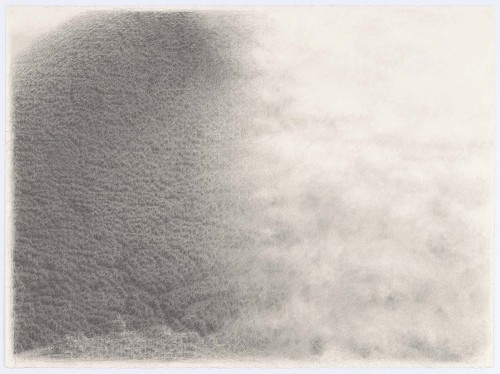
Fog and Mountain, 2014 pencil on paper 22 1/4 x 30 in., all images courtesy of the Paul Thiebaud Gallery – please click for larger view

Long Valley in Shadow, 2014
pencil on paper
42 1/4 x 30 in.
A few weeks ago I saw the Michael Tompkins current solo show at the The Paul Thiebaud Gallery, Michael Tompkins: Recent Paintings & Landscape Drawings, March 15 through May 7, 2016. I was particularly interested in seeing his new Landscape Drawings as he had hinted about this new body of work when I had interviewed him back in 2013. I was also fortunate that Michael Tompkins was free and that he agreed to talk about his new work at the gallery.
The show is divided between three bodies of work: ten large-scale landscape drawings ranging up to 55 x 42 inches, invented landscape paintings that relate to the drawings and recent still life paintings.(please see slideshow of the oil paintings at the end of this article) My review centers on the drawings shown on the first floor of a marvelous North Beach Victorian house converted into spacious, light-filled two-story gallery space that has long been one of San Francisco’s leading galleries. There is a show catalogue featuring reproductions of the drawings.
Kelly Purcell, the Gallery’s Director wrote in this catalogue essay:
“Created over a period of six years, the drawings began as a respite from making very complicated, time-intensive paintings. He turned to the “pleasure of simple things” as imparted time and time again during the tutelage of his former professor, Wayne Thiebaud. Beginning with the idea of an elementary shape pursued in black and white, thereby eliminating the complexity of color, through a medium usually reserve for studies, Tompkins had no preconceived idea of what the content would ultimately become…”
An obsession and devotion to art requires being comfortable with a hermetic existence. Alternating between the precisionist painting to the looser pencil drawings might seem a respite but I suspect the drawings become as intense and demanding as his still lifes, as the different process satisfy different artistic needs, like getting balanced nutrition from each of the essential food groups. Finding structure through an improvisational drawing process could be enormously liberating, especially for an artist best known for his meticulous, highly detailed still-lifes. Perhaps analogous to a classically trained concert violinist taking time out to play in an avant-garde jazz band and having both forms nurture artistic growth.
These drawings of course aren’t perceptual, they are invented spaces. However the subjects do relate to Tompkins’ memories and sketches while hiking in the Golden Gate National Recreation Area near San Francisco.
An artweek.com review stated:
“…the painter often observed effect of light on static, long familiar forms. His perceptions of the hills changes radically with the winter light” they became darker, more simplified forms, all mixed into a haze. He would return to Berkeley with “a notion of the way I’d seen the sun that day. What happens with a light that cuts across a ridge and falls?’ Tompkins recorded many reflections of these forms in small sketchbooks carried while hiking. The sketching continued during the development of the large-scale drawings, relating to both the original concept and the final work.”
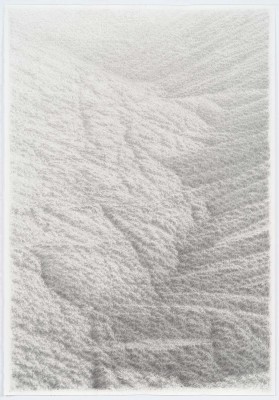
Watershed, 2014–2016
pencil on paper
52 x 36 1/4 in.
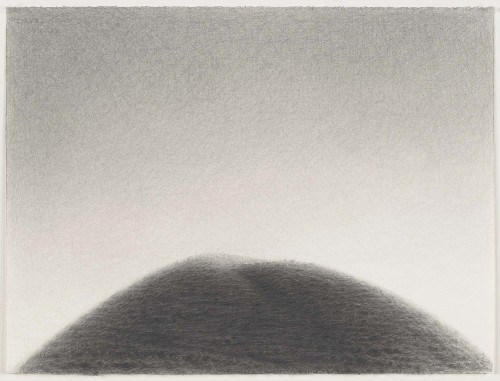
Dark Hill, 2012–2016
pencil on paper
22 3/4 x 30 1/4 in.
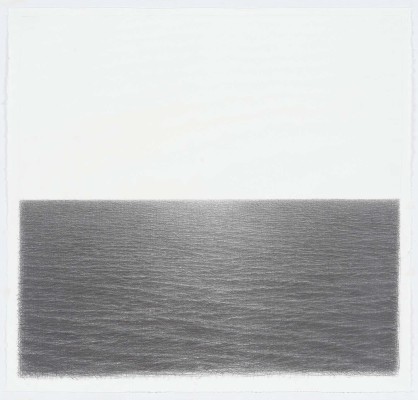
Dark Sea, 2015
pencil on paper
29 x 30 1/2 in.
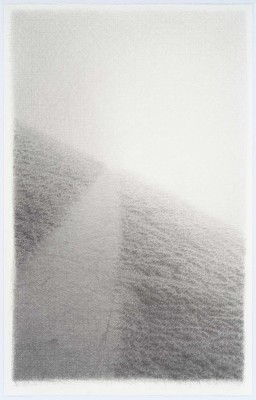
Dirt Track, 2015
pencil on paper
42 3/4 x 27 in.
I remarked to Michael Tompkins in the gallery that his drawing reminded me of Vija Celmins drawings from the 70’s of ocean and desert forms. I found a quote from her at the Tate Gallery that I thought relevant here:
“I see drawing as thinking, evidence of getting from one place to another. One draws to define one thing from another … I tend to take very small increments and steps in changing. An example was that I had been working with the pencil and I began to see that the graphite itself had a certain life to it. So I did a series of images of oceans and deserts using different grades of graphite and pushing each one to its limit. I learned a lot about the possibilities of expressiveness in graphite by doing this. Then I moved into the galaxy drawings. Even though you may think they came from lying under the stars, for me, they came out of loving the blackness of the pencil. It’s almost as if I was exploring the blackness of the pencil along with the image that went with it. ” –Vija Celmins
The grid-like weaves of horizontal and vertical marks layered between endless variations of cross-hatching inventions and the light touch uses the pencil grades’ natural value, where a 3H pencil respects the 2H tonal realm. The sensitive touch of a lightly held pencil allows the pencil to best traverse across the peaks and valleys of the paper’s texture and to take advantage of the randomness resulting in the marks getting minute course deviations which then suggests unique possibilities for each mark.
Almost every great drawing starts with an idea of what it’s about, such as a figure doing something or a particular arrangement of shapes. Locking in a drawing’s structural direction at the start of course isn’t problematic and often the drawing is kept fluid and open to change at every step. However, there is an excitement in working without a plan, in discovering the drawing’s structure as you go along. This process is more akin to abstract expressionism, where the all-over process takes precedence over description. Gestural flow, compositional choices and the overall structure is interactively realized by the artist from reading the call and response of marks applied or erased, either to explore the randomness further or to gradually suggest a pathway to structure. This organic process is not unlike the natural effects of growth patterns and erosion.
This open,randomizing process not only allows for abstract possibilities to evolve but also inoculates the marks against becoming stylized. Drawing specific, preconceived forms at the start, such as individual trees in a forest, would be more likely to constrict the mark-making into the objects boundaries and less on the overall lyrical flow of tone and marks across the whole drawing. Eventually the pathways and forms become highly specific, with nothing formulaic or generalized. The overallness of the compositions don’t direct our gaze to one form in particular instead the viewer is kept in constant visual motion, shifting attentions from the subtle changes of light and atmosphere to the linear gestural and textures movements. These are drawing that are less about maps and more about travel.
The innumerable layers of gestural marks and erasures woven with the white of the paper suggest an atmosphere, the breathing of a living forest–a photosynthesis of light and dark–from the lightness of oxygen to dense graphite; life restored to a carbon-compressed primeval forest with an incalculable timeline.
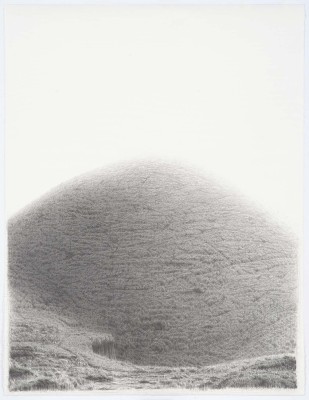
Round Hill, 2013–2015
pencil on paper
55 3/4 x 42 3/4 in.
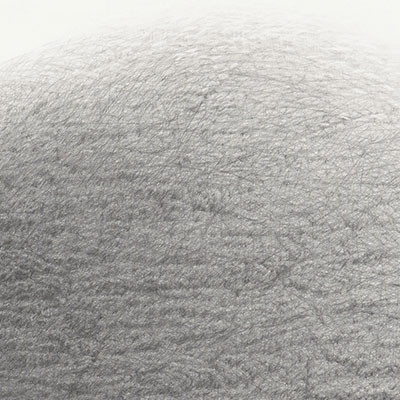
Detail from Round Hill
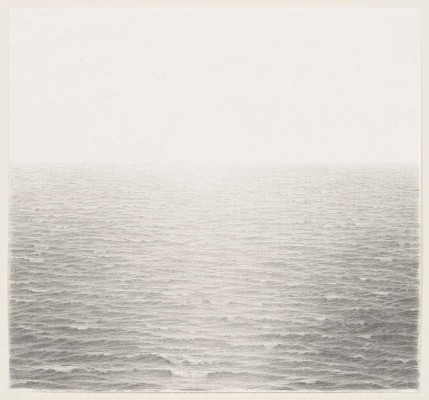
Sea, 2012
pencil on paper
16 3/4 x 18 in.

Search for a Timberline Trail, 2016
pencil on paper
42 1/4 x 34 in.

Slow Path to a Long Hill, 2013–2016
pencil on paper
53 x 42 3/4 in.
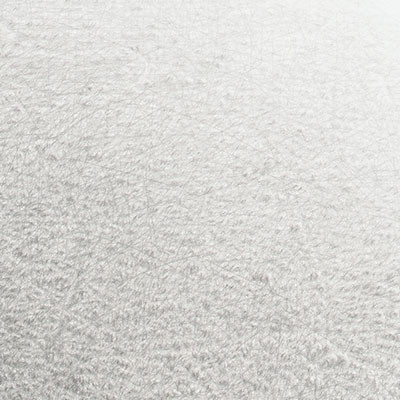
Detail from Slow Path to a Long Hill,

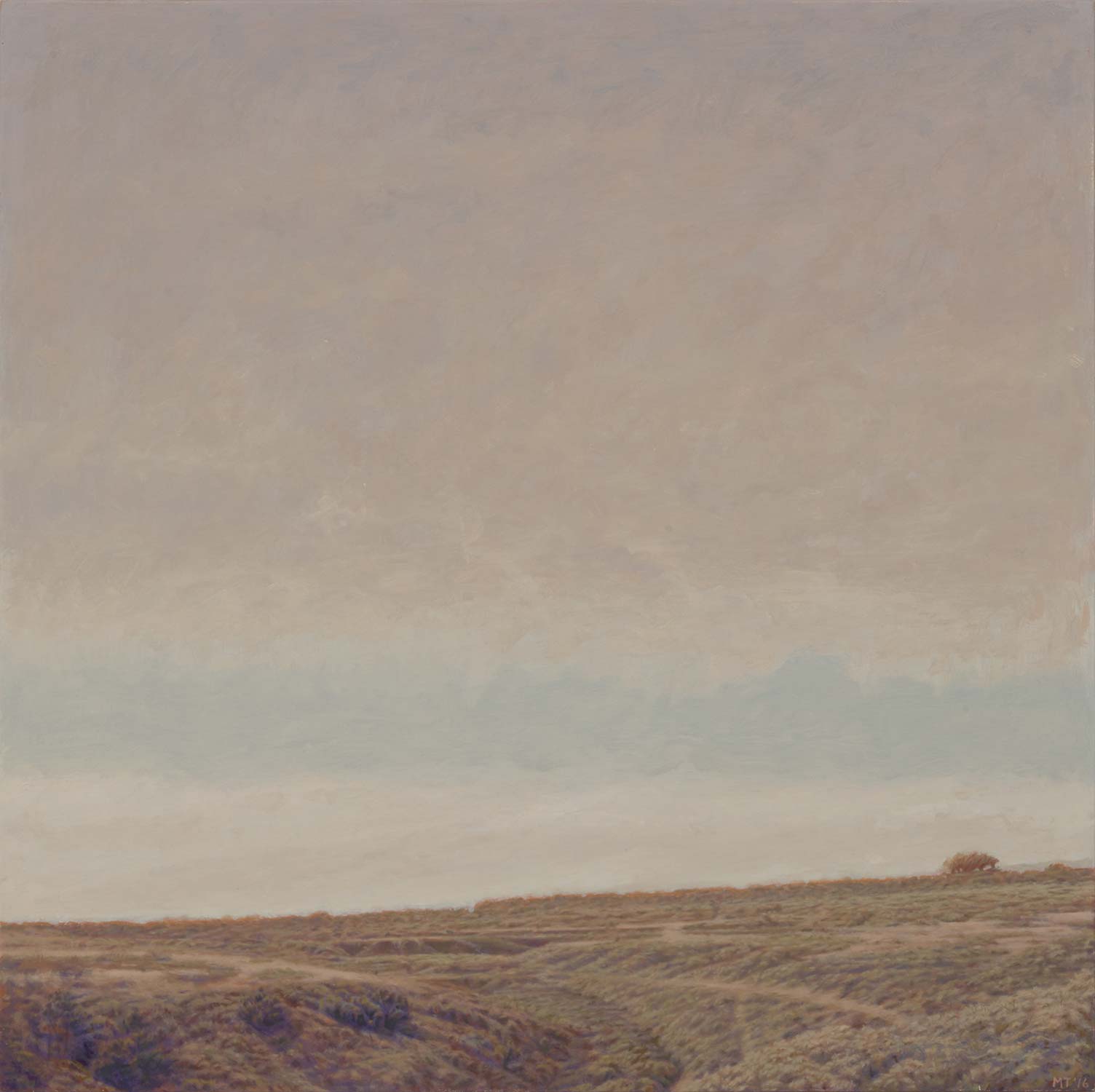
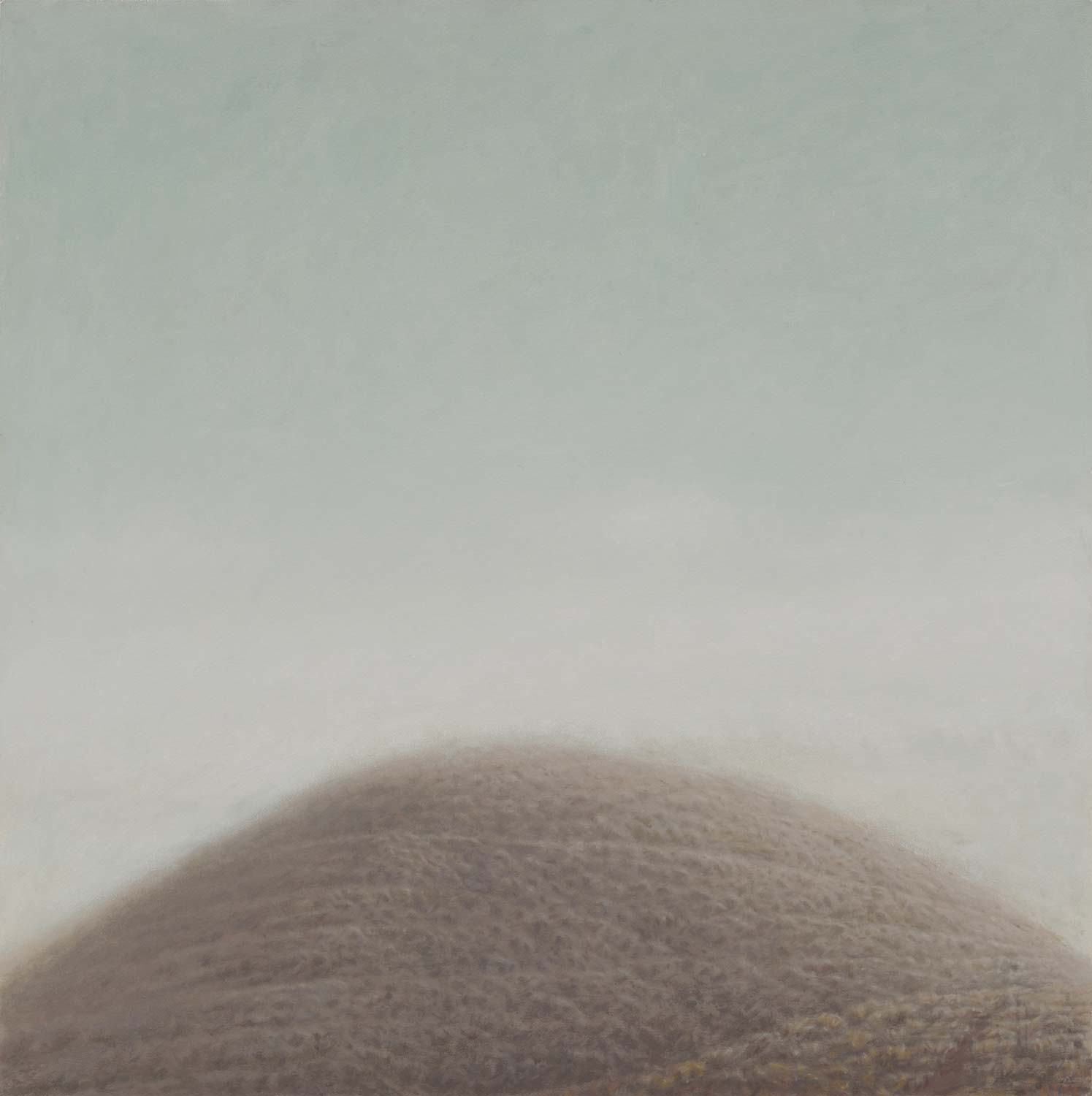
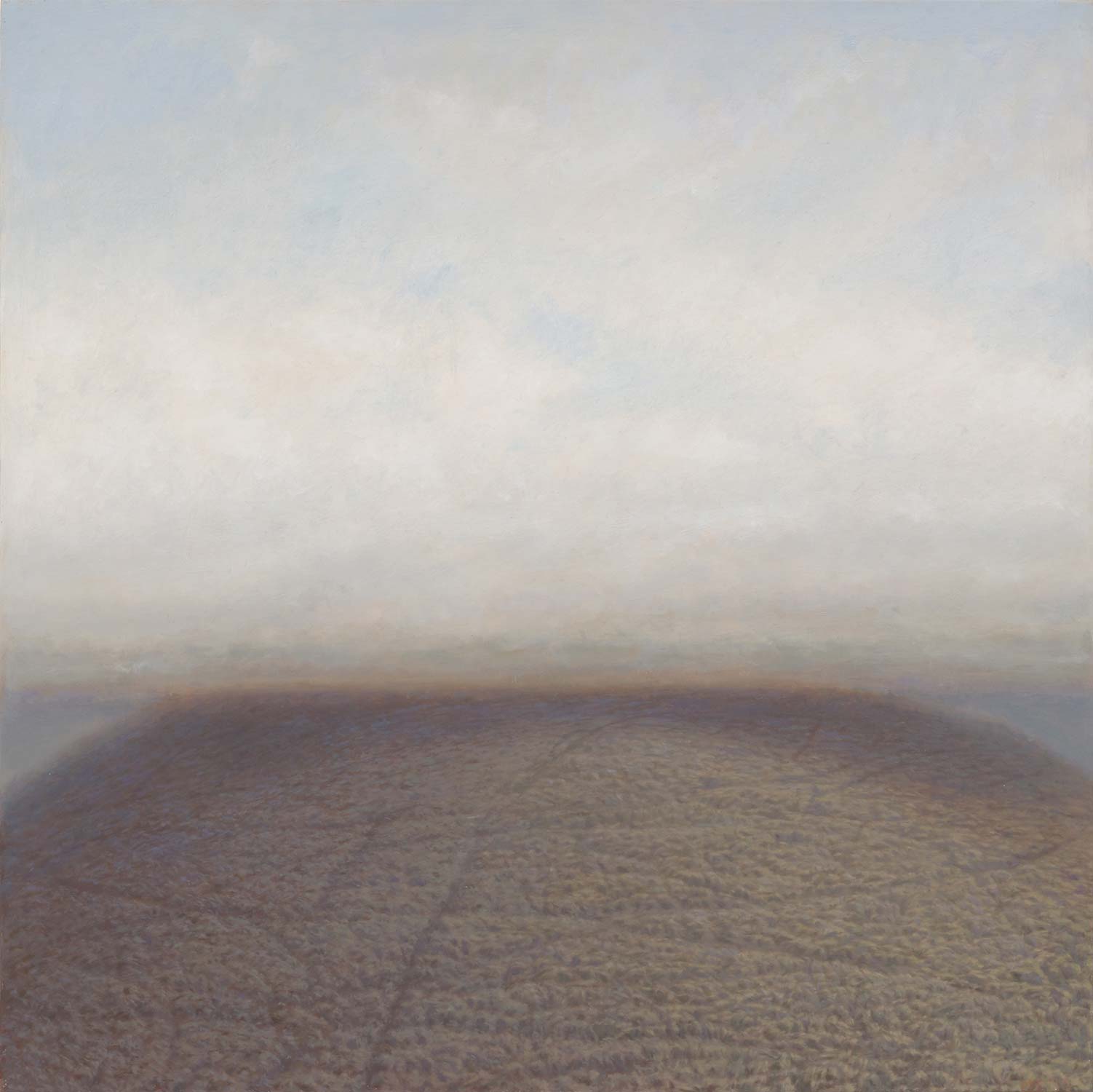
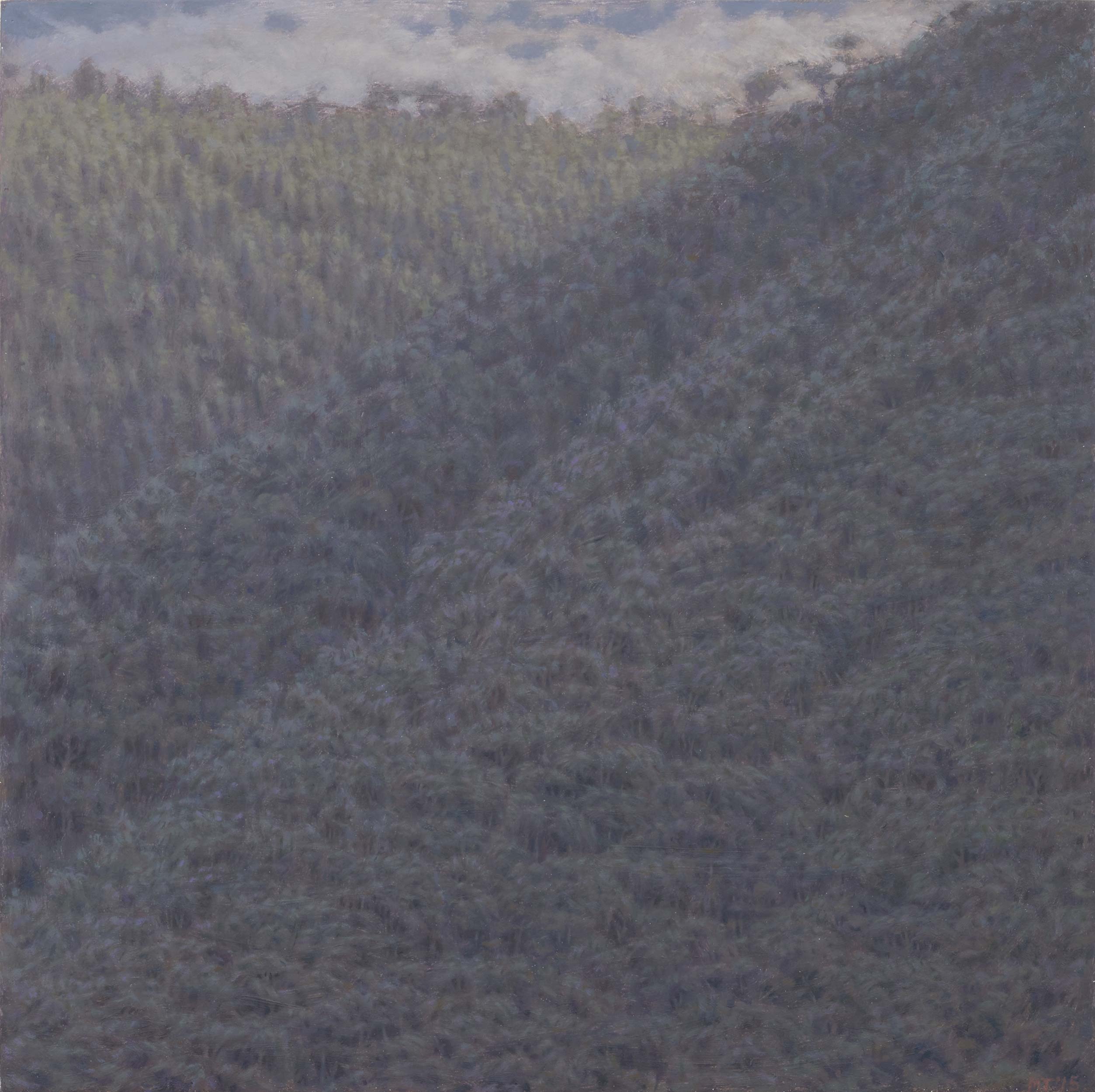

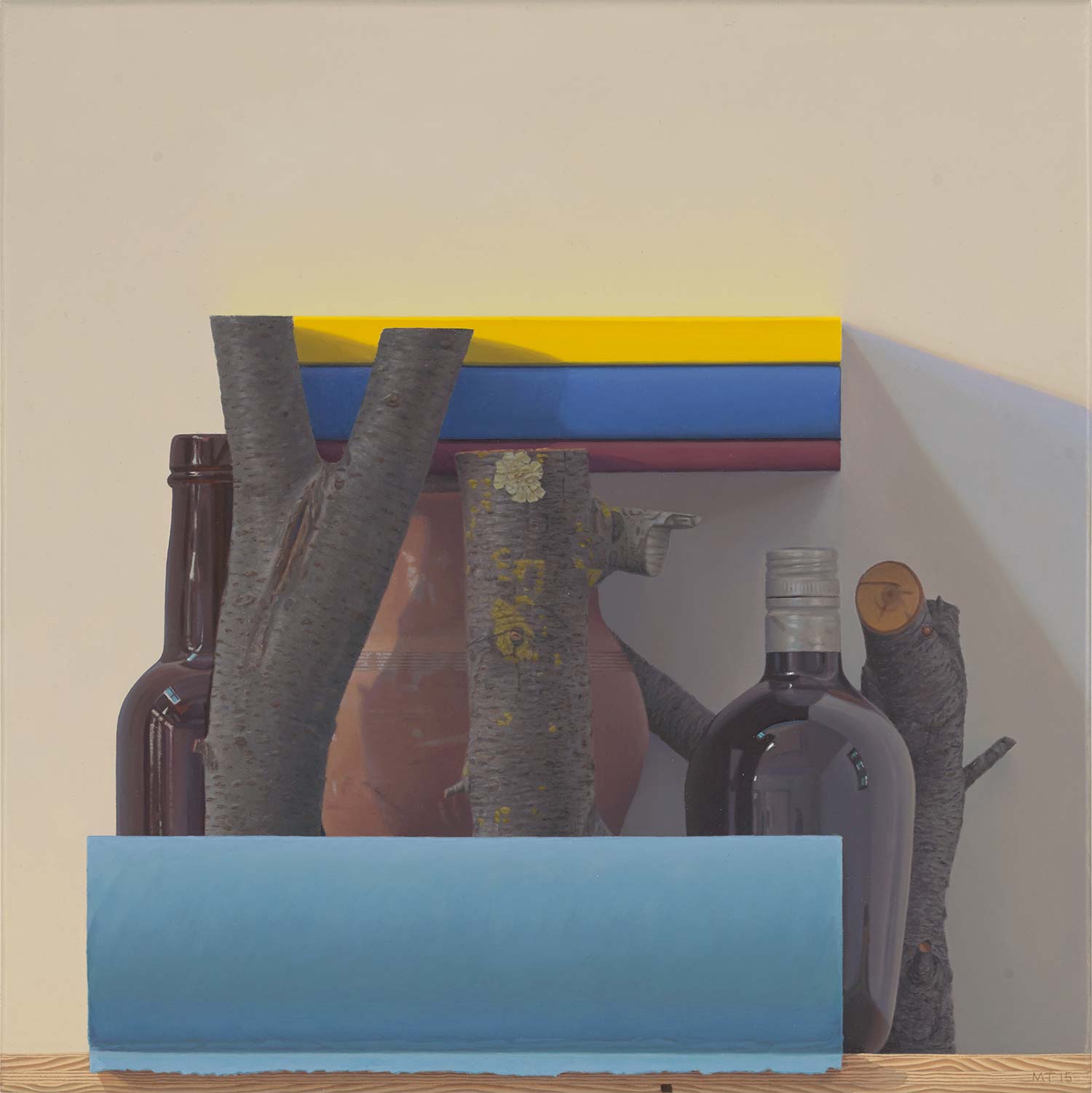
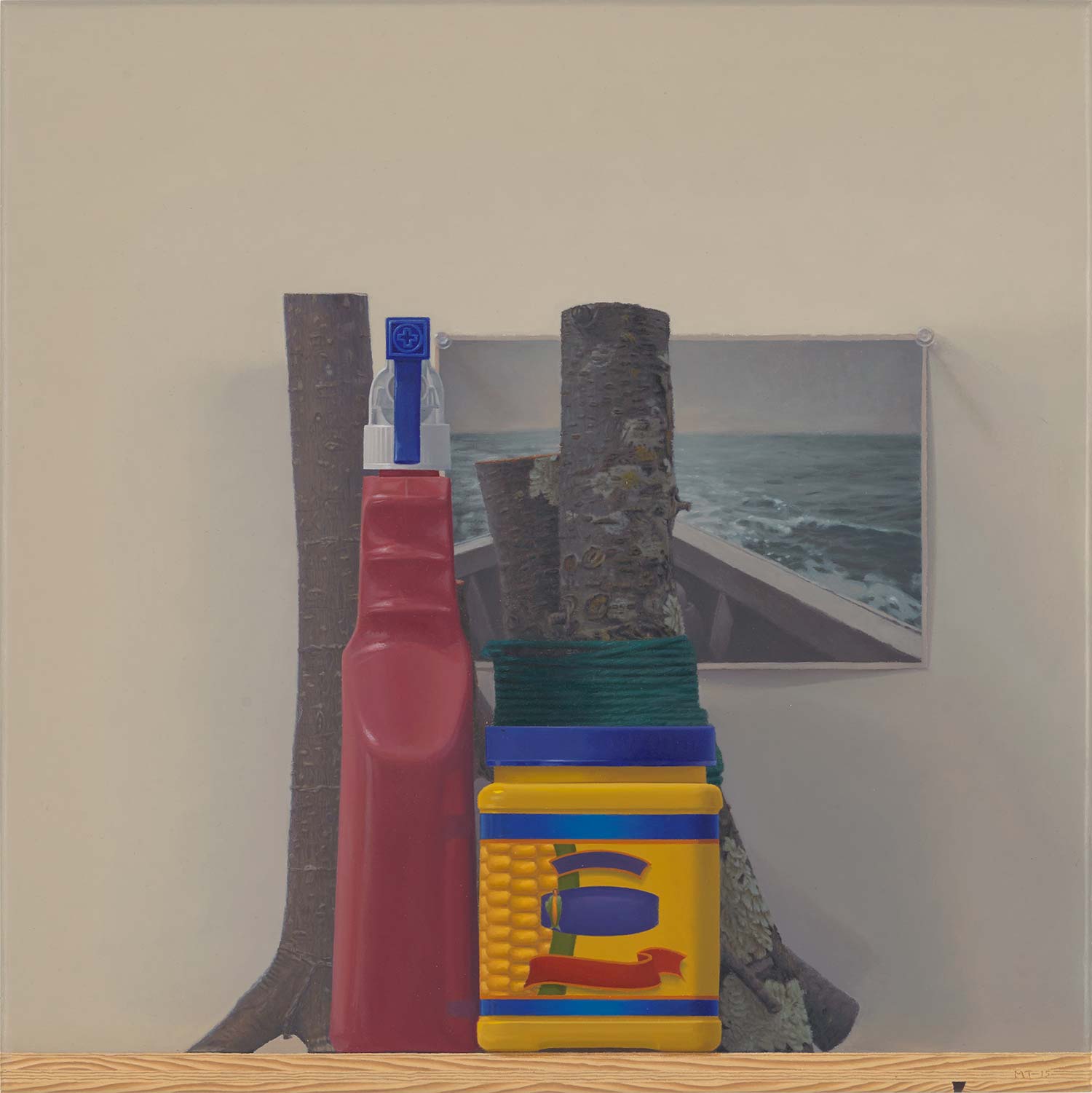






These are stunningly beautiful. They create the desire to look closer and closer to see “how” they were created- while stepping back to just take in the sweep and flow of the line. Invigoratingly subtle.
Quiet fields of meditation. These are stunningly and quietly beautiful. One has to give oneself over to them.
Thank you for making these.